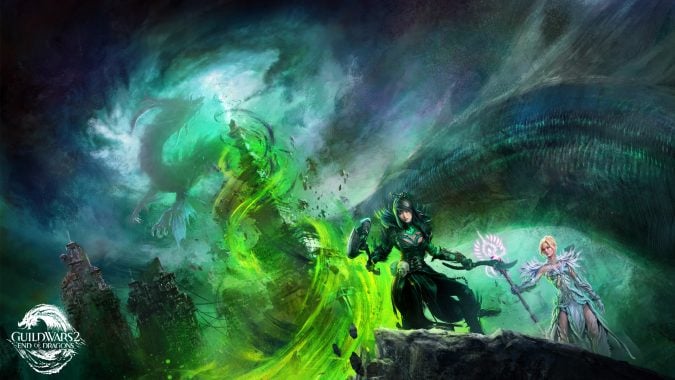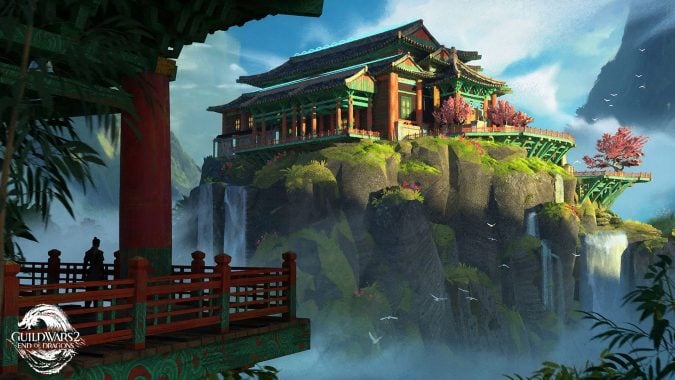End of Dragons takes Guild Wars players back to Cantha, but it won’t be the same as we remember

When the Guild Wars 2 expansion End of Dragons releases on February 28th, Guild Wars players will be returning to Cantha for the first time in over 15 years, since the Factions expansion was released. The last of the original game zones to make it into Guild Wars 2, the fans have been clamoring for Cantha almost since the game was announced. Over 250 years have passed in-game since the last time we were there, so it’s expected the experience will be vastly different for players who played the original game.
If you haven’t played the Factions expansion, Cantha is the Guild Wars equivalent of an Eastern Asian environment, similar to Pandaria in World of Warcraft and Othard in Final Fantasy XIV. A recurring theme across these locations is isolation, and Cantha is no different — the nations of Tyria have had minimal contact with Cantha in the past two centuries, and one of the storylines will be getting the locals to trust the Commander when he or she arrives to deal with the fallout of the past few expansions. There were four zones in Cantha during the events of Factions, and they will also be present in End of Dragons: Shing Jea Island, Kaineng City (now known as New Kaineng), Echovald Forest (renamed Echovald Wilds), and the Jade Sea.
The main change that will face the player is verticality — in the original Guild Wars you couldn’t even jump, so it was easy to limit the players’ ability to get around the map. With Guild Wars 2 we now have mounts and a glider, and the Cantha map will take full advantage of those to expand our opportunity for exploration. Normally gliding requires the Heart of Thorns expansion, while mounts require the Path of Fire expansion, but for End of Dragons the developers have added the ability to unlock gliders and the first two mounts (Raptors and Springers) without needing those expansions. So if you’re coming back to Guild Wars 2 just for Cantha, you won’t need to invest in the other expansions to fully experience End of Dragons.
Another change for the whole region is the implementation of a day/night cycle, something the original game did not have. There will be a change for current Guild Wars 2 players as well, as it has been revealed they expect the night portion of the cycle to last longer in Cantha compared to the other continents. Since some events are dependent on the time of day, it’ll be interesting if the players like and adjust to the new schedule.

The effects of the Jade Wind still linger but are fading
Two hundred years before the events of Factions the death of the betrayer Shiro Tagachi unleashed the Jade Wind across the Empire of Dragons, petrifying the Echovald Forest and transforming the waters of the inland Jade Sea into its namesake mineral. Now that it has been close to 500 years since that cataclysmic event some of the effects have started wearing off.
The largest change is that Echovald Wilds is no longer petrified, and abundant life has returned to the zone creating a jungle aesthetic. Gigantic trees dominate the landscape, with scattered villages struggling to survive between two major gangs vying for control. Also present in the Echovald Wilds — to the chagrin of their jade-disapproving neighbors — is the Jade Brotherhood, who have augmented the surviving gothic cathedral-like buildings from Factions with technology from the harvested jade of the Jade Sea, known as dragonjade due to the infusion of dragon power within the jade.
The Jade Sea itself remains solid, although there are some hints that it’s starting to dissolve back into water, which would be devastating to the nation that relies upon it to power its cities and weapons. The main change from Factions is the zone has become an important production center, with dragonjade quarries abounding — some dug down to the original seabed. The region is not completely devoid of water as some has filled in these gaps, so your fishing skiff will still be useful here.

Returning to where it began
Shing Jea Island is the zone with the fewest known changes so far; it remains home to the Shing Jea Monastery where new Factions characters started, and it is still dotted with gardens and villages. There was some concern that it may have suffered damage from the awakening of Zhaitan (the first Elder Dragon that was dealt with in Guild Wars 2) 100 years earlier, but it so far appears unaffected.
The same can not be said of neighboring Kaineng City. When the Zhaitan disaster occurred, a giant tidal wave took out a large chunk of old Kaineng, leaving behind ruins populated by the Risen — undead servants who still wreak havoc wherever they are despite the death of their controlling dragon. New Kaineng was built near the old location, and is a juxtaposition of traditional Canthan architecture with dragonjade technology. Taking advantage of the verticality of Guild Wars 2 has allowed the Canthans to build the city with multiple levels, with the more prosperous members of society in the upper levels.
These are some of the changes coming to a land that original Guild Wars players were familiar with. While there are plenty of updates to reflect the two-plus centuries of independent development separate from Tyria, the developers have also put in a lot of familiar touches and easter eggs for those who are returning to adventure in Cantha on February 28th with the release of End of Dragons.
Please consider supporting our Patreon!
Join the Discussion
Blizzard Watch is a safe space for all readers. By leaving comments on this site you agree to follow our commenting and community guidelines.
 @Kalcheus
@Kalcheus




